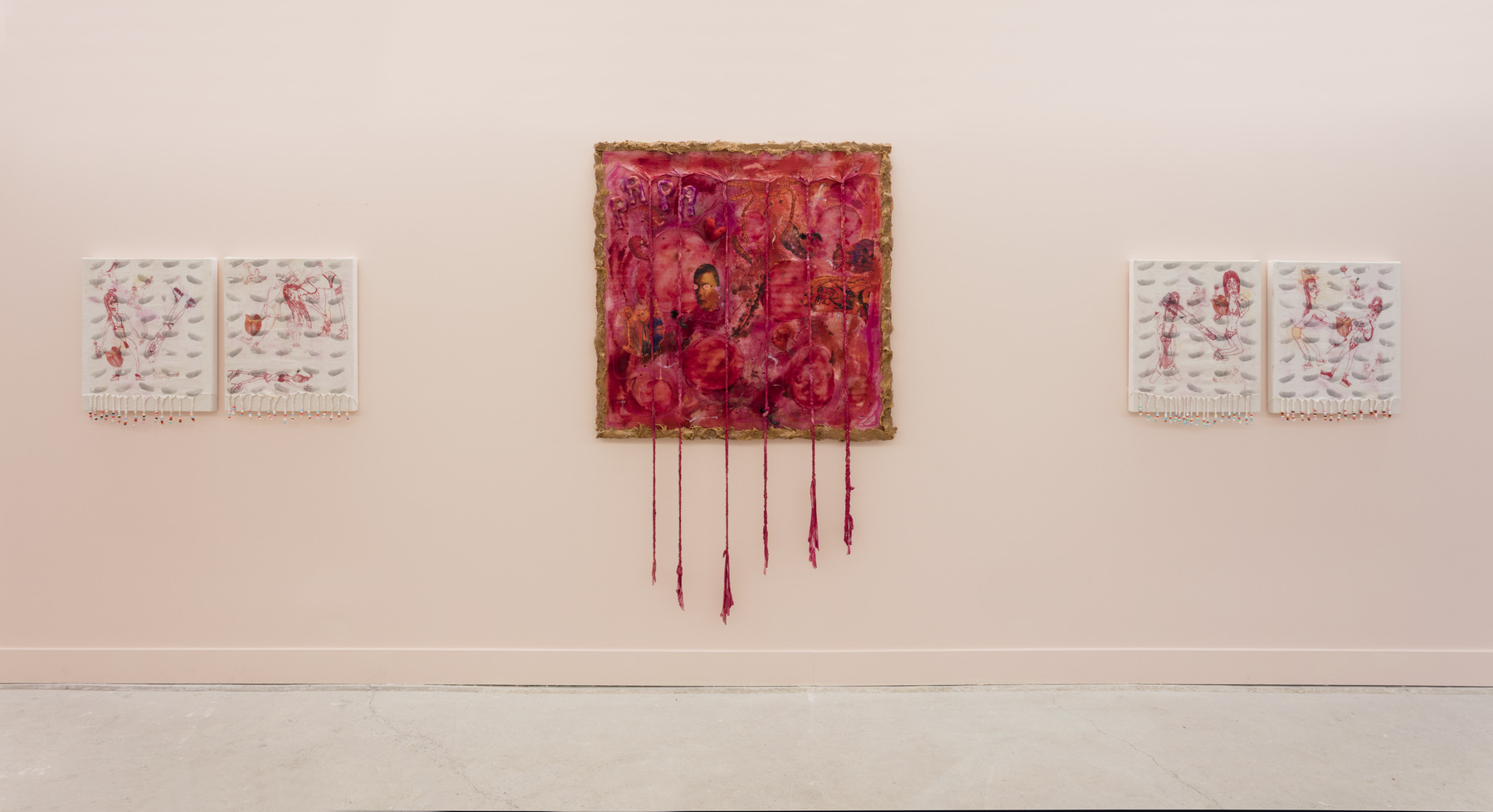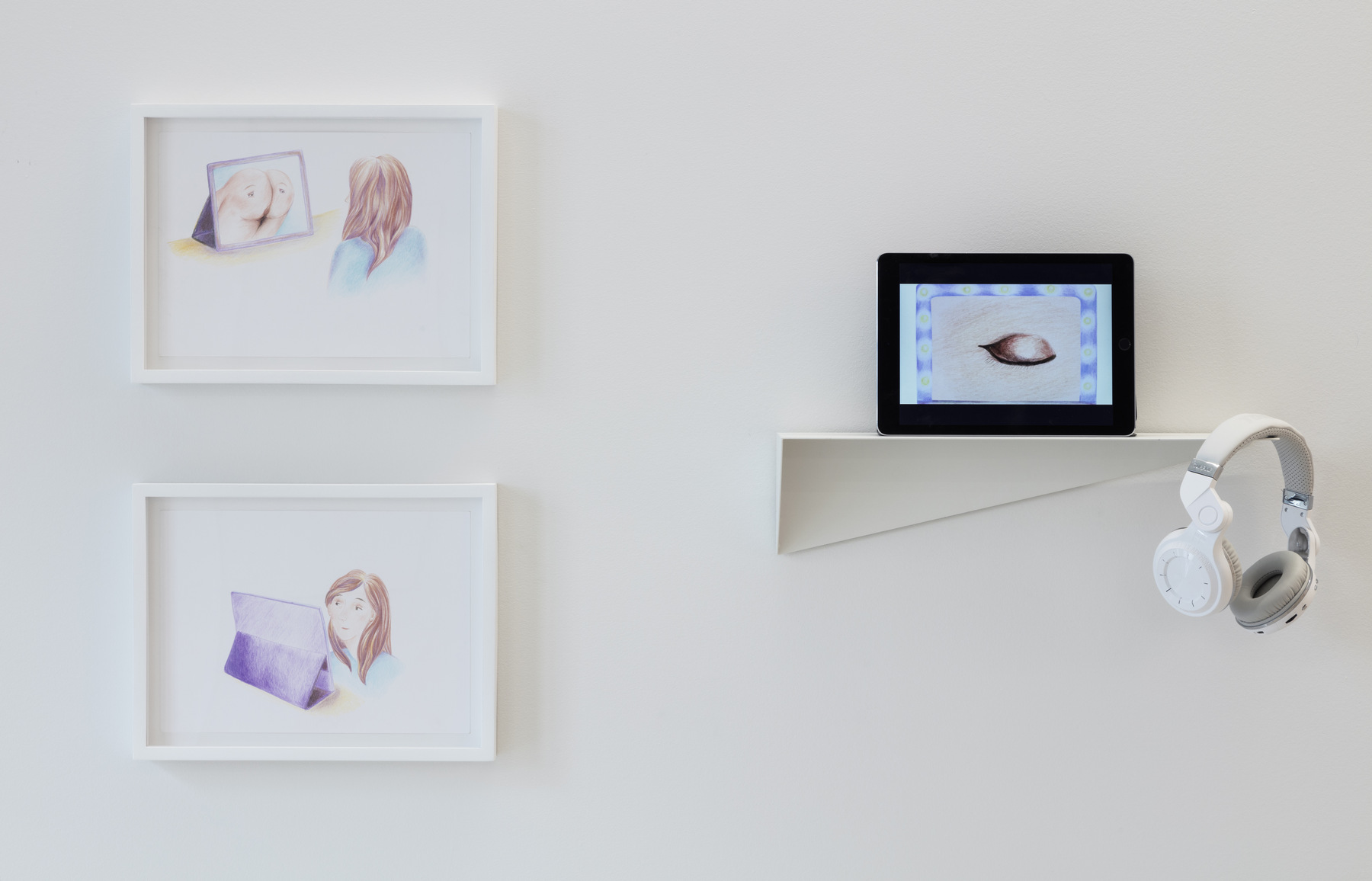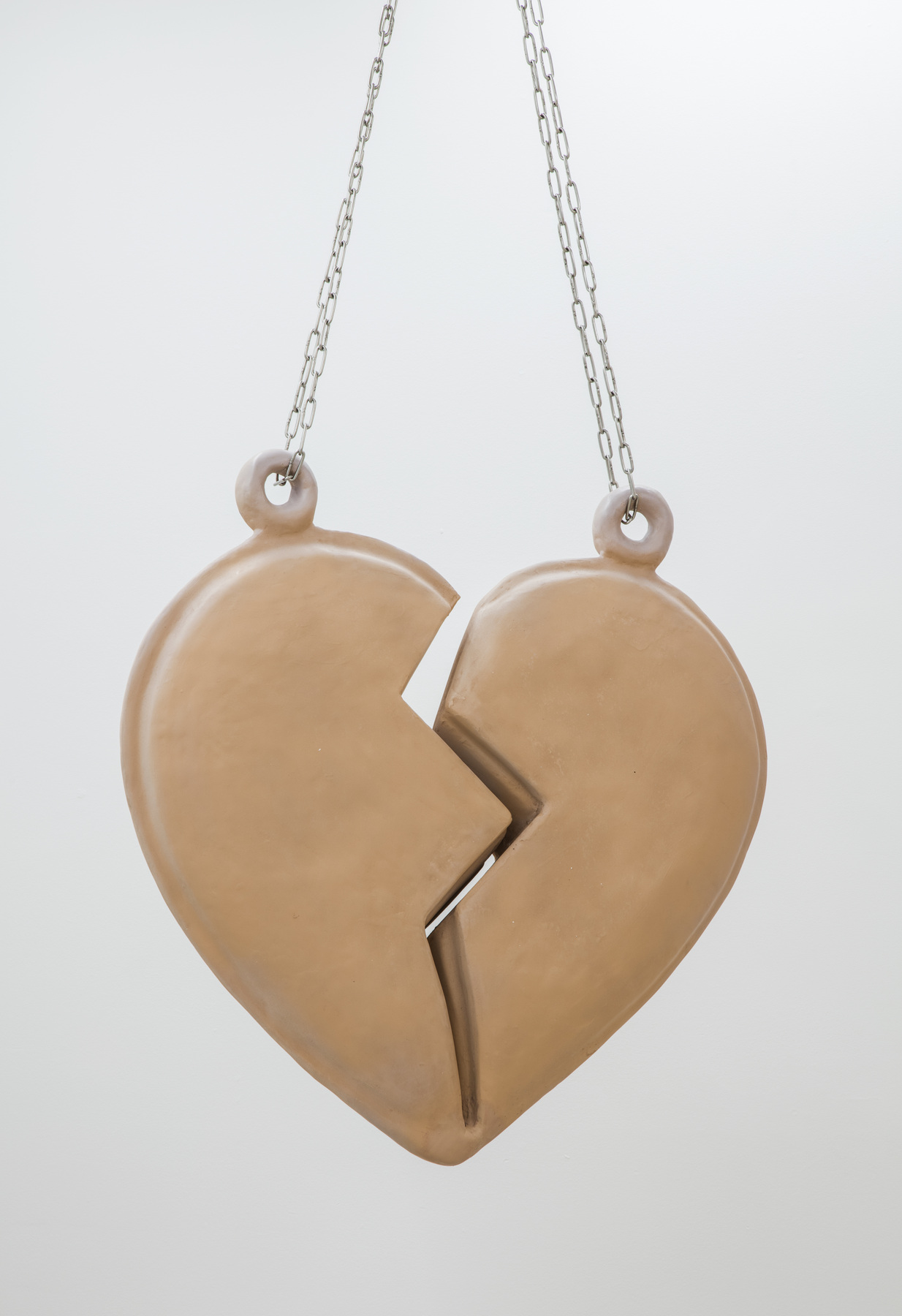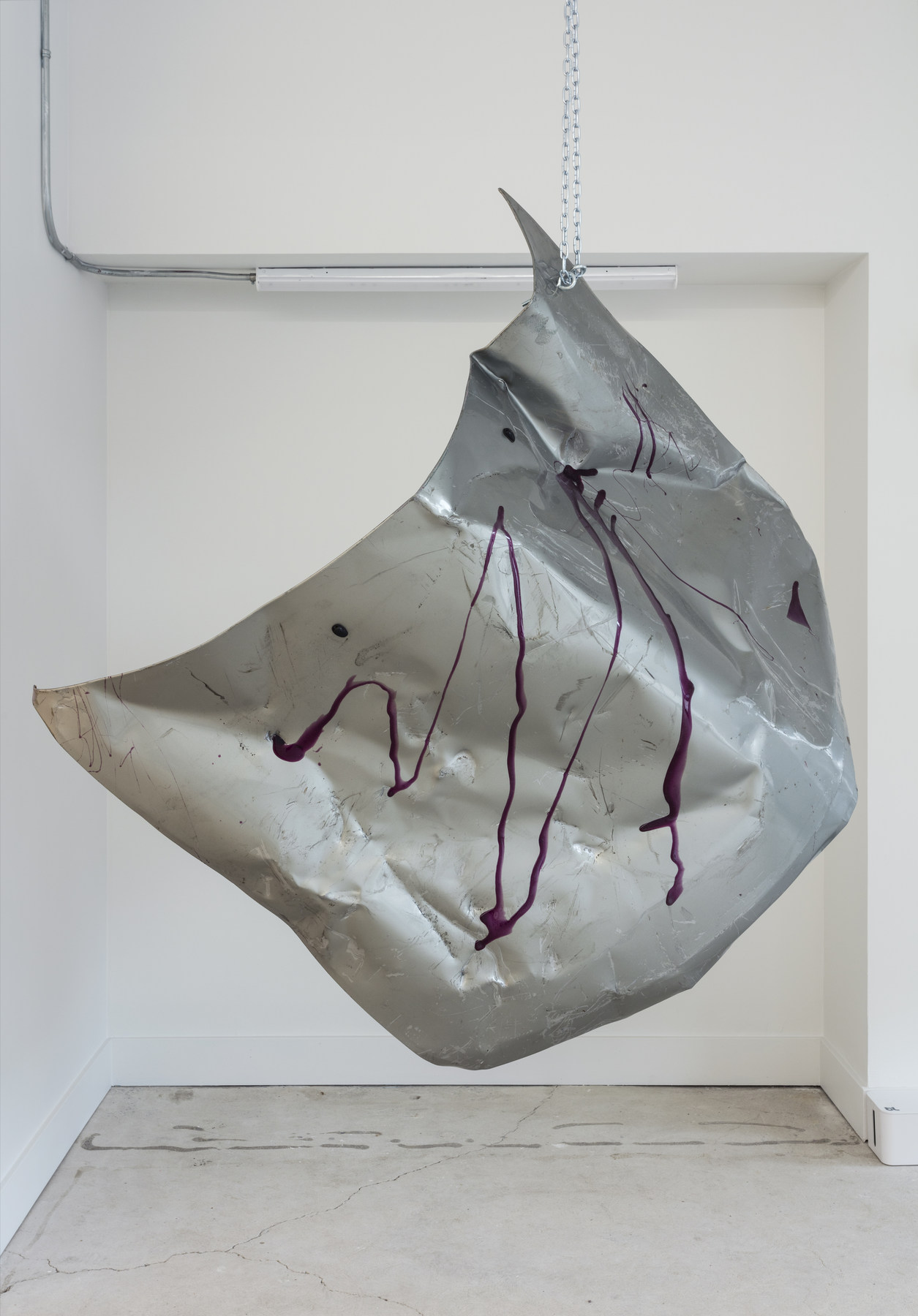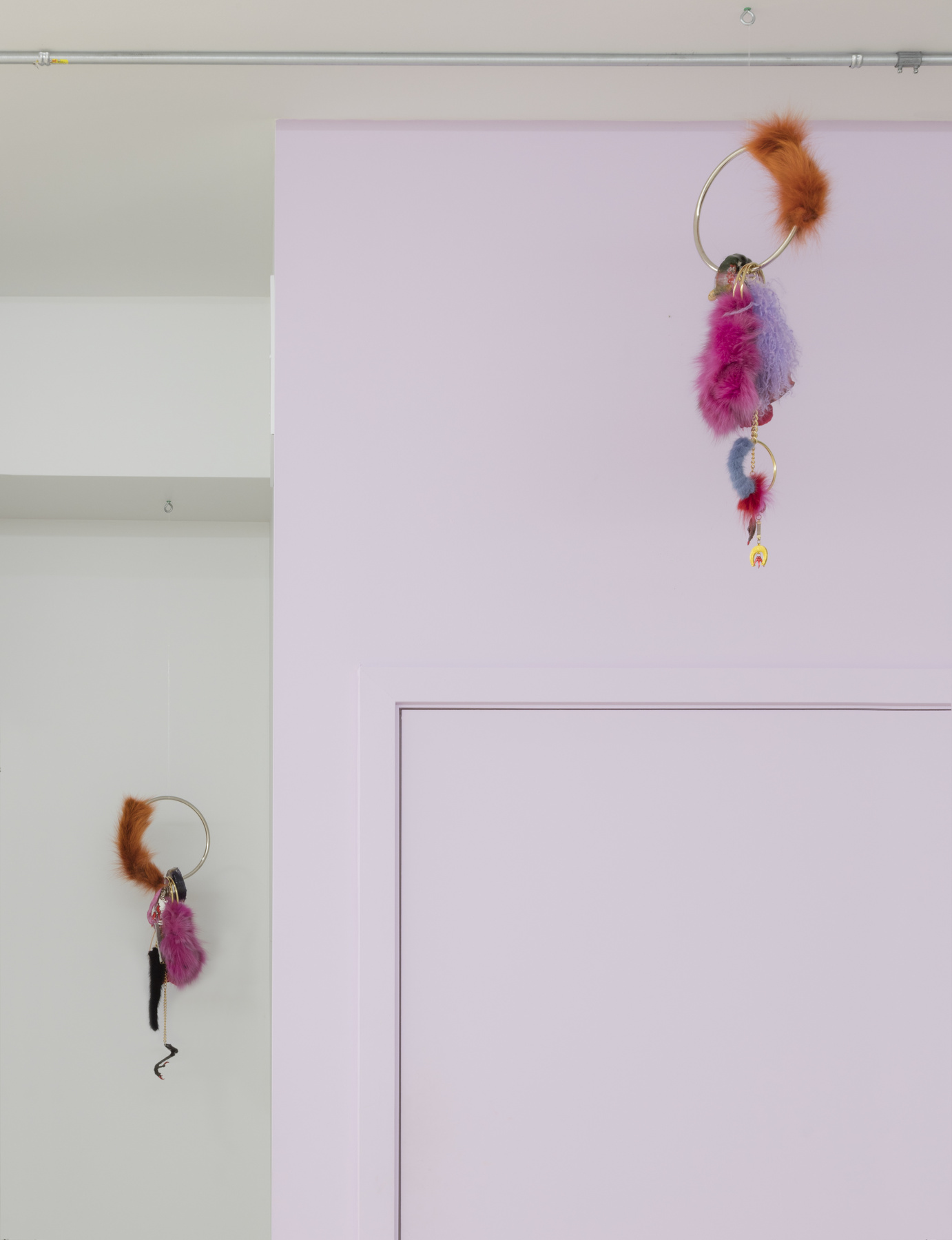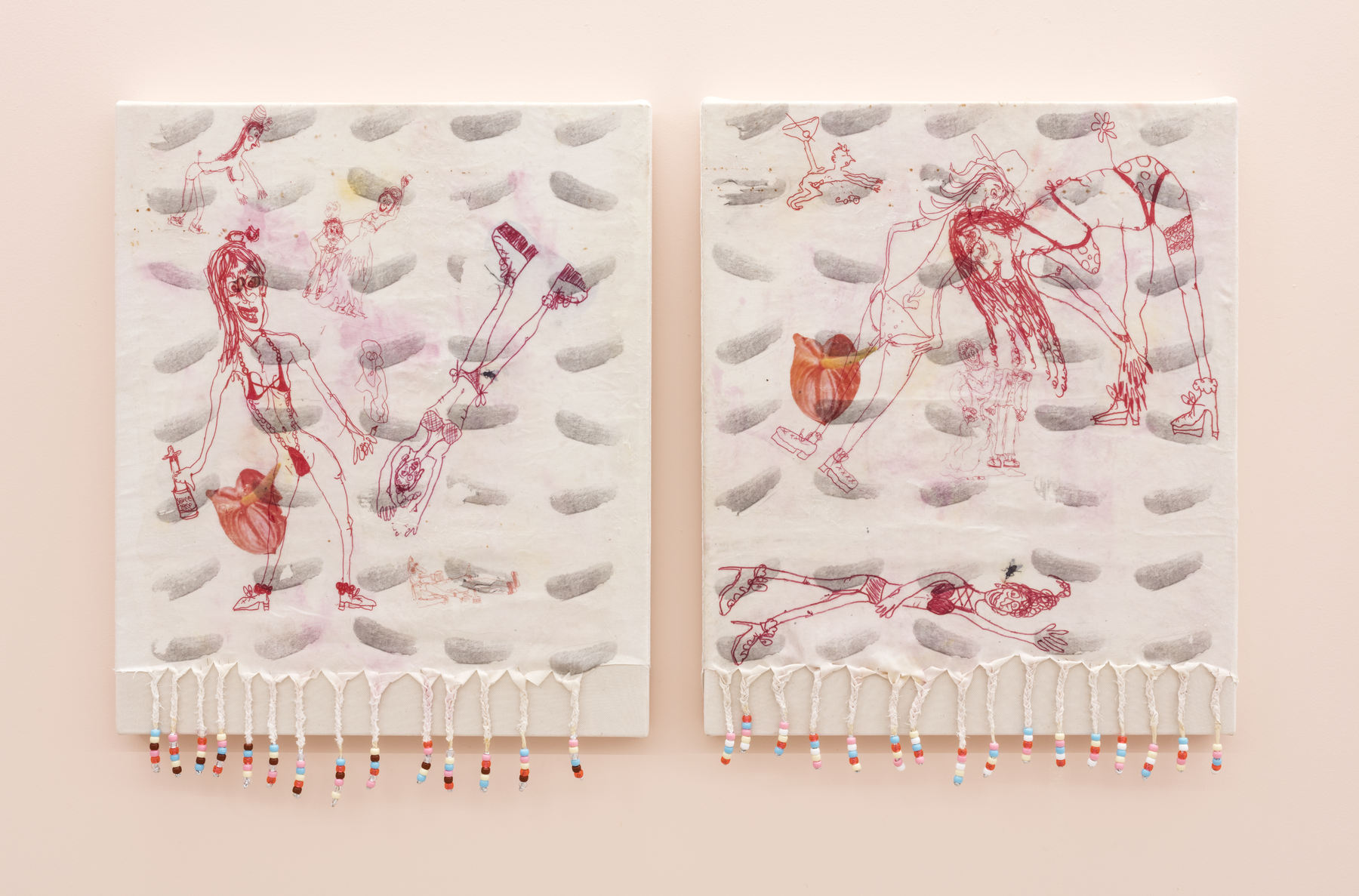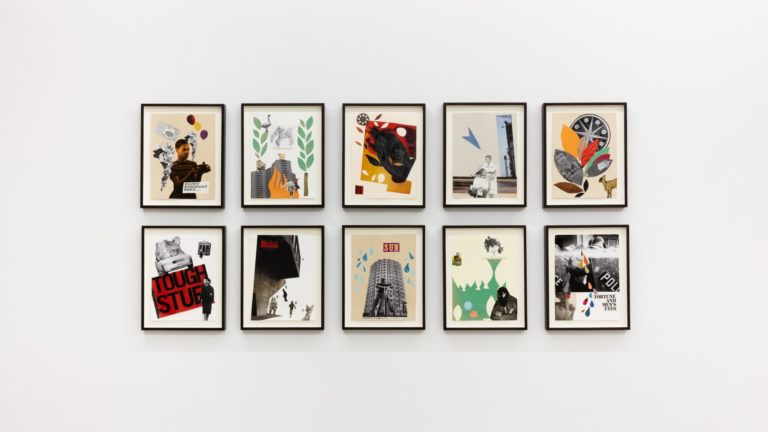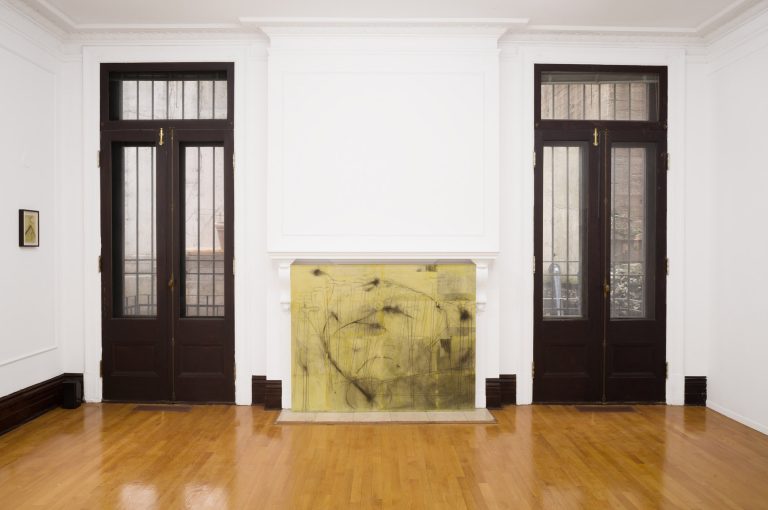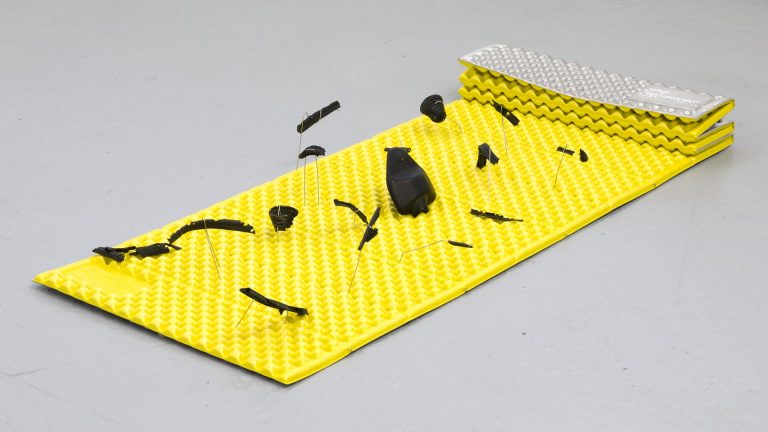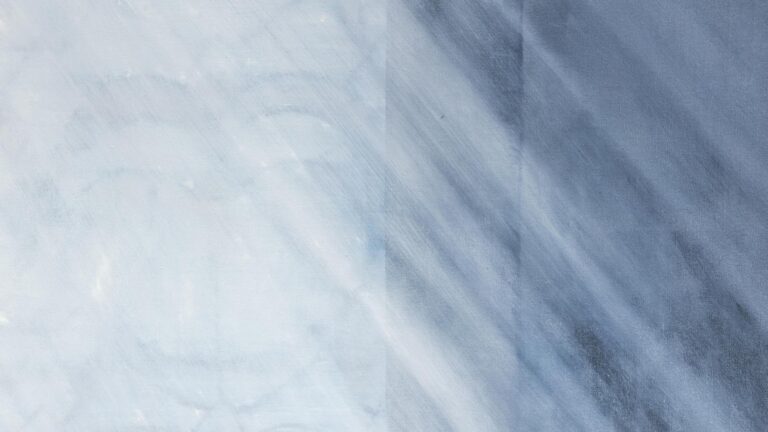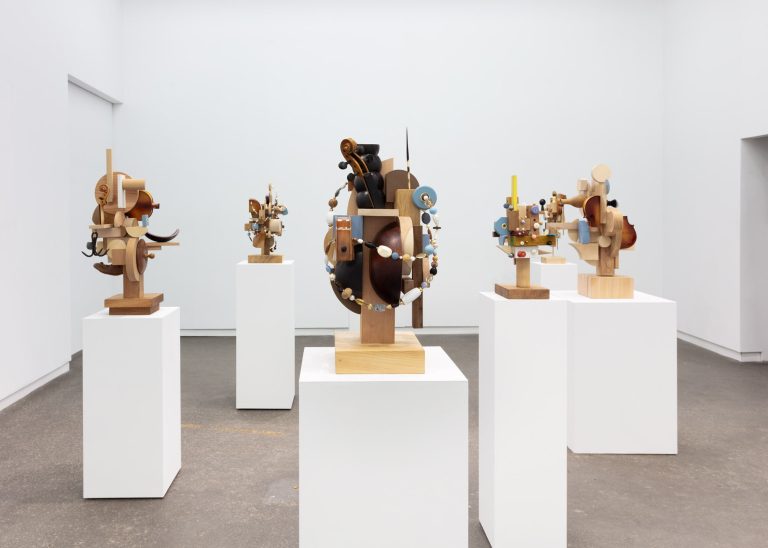Artists: Eleni Bagaki, Beatrice Marchi, Athena Papadopoulos, Hannah Perry, Anna Uddenberg
Exhibition title: Millennial Feminisms
Curated by: Sarah McCutcheon Greiche
Venue: L’INCONNUE, Montreal, Canada
Date: April 19 – July 15, 2017
Photography: all images copyright and courtesy of the artists and L’INCONNUE, Montreal
EVERYTHING IS COMPROMISED
Text by Susana Vargas Cervantes
The term millennial in this exhibition refers to a specific generation of women artists who do not shy away from being identified as feminist, and whose work equally deals with traditional understandings of feminism that involve femininity, gender, love, sex and relationships through a consumerist and neoliberalist culture, involving labour, data and new technologies.
To me, what brings together these five international artists under a loose umbrella of feminisms is the methodologies they engaged with to deal with similar themes. While the term millennial might connect us to the use of internet culture and a socially networked world, I find it is equally their humorous approach to love that brings them together in this exhibition.
For example, Beatrice Marchi’s color-pencil drawing entitled Gelato e Tristezza con Panna (Ice Cream and Sadness with Cream), depicts in pastel colors a cartoonish looking couple about to share an ice cream through what is at the same time an open mouth and anus, ready to take a lick of the melting strawberry and vanilla ice cream. This opened mouth/anus could also be read as a cartoonish vagina complete with teeth and lipstick. We only see the couple in a profile, united by this mouth/vagina/anus, one long-lashed eye each, and their tears echo the dripping vanilla ice cream. It is with humour that love and sex and relationships are portrayed. Once in love we started to share an ice cream and now with teary eyes and a melting ice cream we can’t tell through which orifice we are sharing it. It must be very hot.
Athena Papadopoulos’ invents her own methodologies and mediums for her art works. In Honeymoon in Pickle Paradise she is also telling a love and sex story. At a distance a proposal is taking place and the traditional moment in which the bride is carried over the nuptial threshold is visible. The present at hand, here, is more concerned with characters that are not necessarily engaged in a monogamous heteronormative relation, they are clearly having more fun. For instance, one character is waving at us smiling from the bottom of the canvas. The relationship between domesticity, traditionalism and pickle and blindness is further materialized through the materials used: pepto-bismol, smearing condiments and cosmetics into re-dyed fabrics. We know they, the characters and even the frame, came back from the honeymoon in Hawaii because the cotton end of the canvas is braided with beads. Everything is enmeshing in this honeymoon.
The theme of love continues with Anna Uddenberg’s piece Broken Nude Heart, which is an oversize big replica of the necklaces teenage BFFs or teenage lovers wear. The heart must be broken into half for each half to wear it. This heart is bigger than the one you can hang on a chain around the neck. It is nude, and not red, silver or gold, which speaks to me of the first love, one without masks or fears. A heart ready to be torn apart for the sake of love.
Eleni Bagaki’s Now you see me, oh now you don’t and Hi! I am here to hurt you, Vagina is the place where we meet/ do you want to meet?, When you are not here/ I want to fuck somebody else tell the story of an unrequited love and sexual encounters. The installation further plays with this where a sock plays the piano visible in an iPhone 5.
Break-ups, the processes of breaking up are also taken up in Hannah Perry’s video works. In Don’t care 3, the camera is fixed. We are inside Hannah’s bedroom. We see the bed covered in mostly a white duvet. No posters, no desk, it seems a bedroom in a hotel room. A woman, Hannah, in black underwear appears, disappears, turns, jumps, is in and out. The image too breaks up. In many ways we are also living the breakup. It’s a love in recovery, overcoming, praying to “shanti to give the strength to accept the things that can’t be changed.” The end. There is a new skin coming. The video presented on an iPad shows constantly, as a background on the video, the contour of a small handmade red heart, to me, it seems it is painted on a mirror with a lipstick. Script HateMail, can be read as a catharsis of a break up too. “Fragmented memories,” the memories we chose to keep and the ones we need to forget after a breakup. At the beginning a close up of Hanna’s face, all the video in yellows, oranges and reds, the tumultuous anger and rage as an inevitable phase of breakups, and at the end the voice turns to whispering, the narration becomes indistinguishable. The last word I can understand is “choice.”
As if break-ups were not hard enough, in this exhibition the artists engagements with internet culture, social media and networks through iPhones and iPads reminds me that, not necessarily exclusive to millennials, social media makes them even harder. The obsession between following and unfollowing and ex on all social media: Facebook, Twitter, Instagram, Tumblr, Snapchat, Pinterest, Periscope, Vine. Blocking, not blocking, returning. It is like Hannah Perry’s Action film, car crash sex scene, Final scene. The end. Only fragments left of a whole and blood still dripping.
It is these heart felt, deep love catharses that make these works gutsy and empowered. This is what we remember as the core of so many different ways of embodying feminisms.
The millennial generation has often been characterized in the media by their lack of involvement with politics and as either post-feminist or focused on liberal feminism. According to Angela McRobbie, post-feminists take feminism into account only to disregard it. Many post-feminists believe that equality has been achieved and now they have a choice and don’t need to fight anymore. On the other hand, liberal feminisms have been characterized as part of the establishment, focusing on “women’s issues” which are reduced to what affects rich white women and not really looking to change the structure as a whole.
I, too, identify as feminist, but feel the need as soon as I identify as such to clearly define what I mean. There are so many ways to embody being a feminist that it is easy to get lost. To me, feminism includes the rights for the poor, for minorities, and trans rights. It includes a struggle that is not only for representation, although that is very important, but mostly for changing the structures of power, the prison-industrial complex, the military state, and the financial arrangements that control governments.
James Baldwin stated “love, or, rather, our ‘deep participation with each other,’ might very well be the affective force necessary to move us beyond neoliberalist preoccupations with the self, which is really a disdain of “the social” and the collective. It is the deep participation with each other in community that is powerful, as opposed to the type of separation (between people and nation states) that neoliberalism engenders”.
I believe it is feminism that provides the methodology to do so. The approaches and methodologies of the works presented here continue to take much of the DYI culture part of the first wave of feminism. Curator Sarah McCutcheon Greiche has been focusing on feminist art since then. In 1979, she curated Womens’ Bookworks a touring show in Canada that originated from Powerhouse Gallery in Montreal, and in 2006 she continued this focus in the exhibition Beyond Feminism also in Montreal at the Parisian Laundry Gallery.
McCutcheon Greiche, identifies as a feminist and for whom the feminist revolution has actually not totally happened. “Feminism is still an issue” pioneer feminist American video and performance artist Joan Jonas confirmed to curator, as she took this statement as a point of departure to curate this exhibition. McCutcheon Greiche wanted to focus on the new generation of artists for whom feminism is “still a central concern, and it is communicated through a layering of ideas about contemporary life, surveillance, consumerism, globalism, sexuality and relationships.” From her first show to now not much has changed, on the contrary: “the stronger sex remains stronger – in the bedroom, in the workplace, on the streets, in politics, in religion and now on the net”. So when she met this new generation of artists whose works she describes as “gutsy” and “empowered” it was time for a new feminist show: millennial feminisms.
Athena Papadopoulos, The Scab, (PAPA), 2016, image transfers on fabric, fleece, wool, mesh, hair dye, lipstick, henna, nail polish, Pepto Bismol, stuffing, thread, self tanner, resin based glue, synthetic hair, wood, nails, crows feet
Beatrice Marchi, Amiche, diptych, 2016, pastel on paper, framed, 23 ½” x 13 ¾” (59.7 cm x 34.9 cm), Courtesy of the artist and Downs&Ross, New York
Beatrice Marchi, Gelato e Tristezza con panna, 2016, coloured pencil on paper, framed, 21 cm x 29.7 cm, Courtesy of the artist and Downs&Ross, New York
Eleni Bagaki, Torso, 2016, printed image on vinyl, aluminum, towel, unframed, 60 cm x 48 cm
Eleni Bagaki, Hi! I am here to hurt you Vagina is the place where we meet/ do you want to meet? When you are not here/ I want to fuck somebody else, 2016, 3 Text works printed on office paper, 11” x 8 ½”
Eleni Bagaki, Now you see me, oh now you don’t, 2016, Sock tune, HD, single channel, sound, duration sec 25, white socks, A4 paper
Anna Uddenberg, Broken Nude Heart, 2014, styrofoam, fiberglass, aqua resin, paint, steel chain, motor, dimensions variable, Courtesy of the artist and HOUSE OF GAGA, Mexico D. F
Hannah Perry, Action film, car crash sex scene, Final scene. The end, 2016, liquid latex, car parts, 54” x 39” x 15”
Athena Papadopoulos, Untitled, 2016, Rabbit fur, image transfers, nail polish, hair dye, wool, wadding, jewelry chain, thread, silk, resin, various objects, claw coated in resin and nail polish, hardware, 18” x 7” (45.72 cm x 17.78 cm), Athena Papadopoulos (collaboration with MCC)
Athena Papadopoulos, Untitled, 2016, Rabbit fur, image transfers, nail polish, hair dye, wool, wadding, jewelry chain, thread, silk, resin, various objects, claw coated in resin and nail polish, hardware, 18” x 7” (45.72 cm x 17.78 cm), Athena Papadopoulos (collaboration with MCC)
Athena Papadopoulos, Honeymoon in Pickle Paradise, (Temptation Island) VI (left) & II (right), 2014, image transfers, Pepto Bismol, Berocca, acrylic beads, tin foil, thread and glue on cotton/linen blend over mesh and canvas, 52 cm x 60 cm each
Athena Papadopoulos, Honeymoon in Pickle Paradise, (Temptation Island) V (left) & I (right), 2014, image transfers, Pepto Bismol, Berocca, acrylic beads, tin foil, thread and glue on cotton/linen blend over mesh and canvas, 52 cm x 60 cm each





